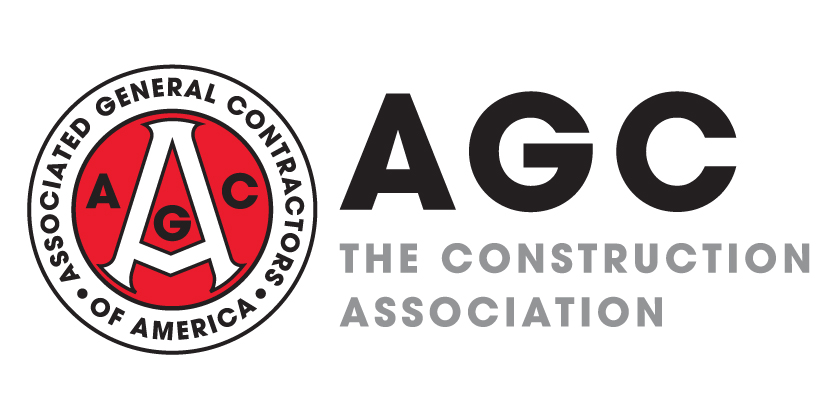
Contractors' bid prices increased 0.2% from August to September, while materials and services input costs dipped 0.1% for the month, based on an AGC analysis of producer price indexes (PPIs) that the Bureau of Labor Statistics (BLS) posted on Wednesday. Compared to September 2018, the PPI for new nonresidential building construction—a measure of the price that contractors say they would charge to build a fixed set of buildings—rose 5.7%. Increases ranged from 4.5% year-over-year (y/y) for new healthcare building construction to 4.7% for office buildings, 6.2% for warehouses, 6.6% for industrial buildings and 7.1% for schools. Increases in PPIs for subcontractors' new, repair and maintenance work on nonresidential buildings ranged from 2.5% y/y for roofing contractors to 5.0% for electrical contractors, 5.5% for plumbing contractors and 7.2% for concrete contractors. In contrast to these output prices, the PPI for inputs to construction—excluding capital investment, labor and imports—edged up only 0.4% y/y, a sharp deceleration from the 6.1% increase one year earlier. This index covers both goods (56%) and services (44%). The PPI for energy inputs to construction tumbled 14% y/y. The PPI for nonenergy goods inputs rose 0.6% y/y; the index for services inputs increased 2.9% y/y. Price increases turned negative for some previously fast-rising inputs such as diesel fuel (down 17% y/y, following a 29% jump a year earlier); steel mill products (-11% y/y, following a 19% gain); lumber and plywood (-10% y/y, following a 5% rise); gypsum products (-8.0% y/y, following a 7.2% rise); and aluminum mill shapes, -4.8% y/y, following an 11% gain). In contrast, the PPI for architectural coatings rose 6.4% y/y, vs. 4.8% a year earlier.
There were 379,000 job openings in construction at the end of August, not seasonally adjusted, an increase of 64,000 (20%) from August 2018, and the highest total for August since the series began in December 2000, BLS reported on Wednesday in its latest Job Openings and Labor Turnover Survey (JOLTS) release. The industry hired 418,000 employees in August, not seasonally adjusted, 37,000 (9%) more than in August 2018 and the highest August total since 2007. The record-high job openings in construction at the end of August—despite unusually elevated hiring—together with the low construction unemployment rate in September (3.2%, not seasonally adjusted, as BLS reported on October 4, the lowest September rate in the 20-year history of that series) and 50-year low for the total unemployment rate, underscore the challenge that contractors face in finding and retaining acceptable workers to hire. The data are consistent with a continuing strong construction market and with the results of the 2019 Autodesk-AGC of America Workforce Survey, which found that 91% of the 1,935 respondents expect their firms will hire hourly craft personnel in the next 12 months (72% for expansion, 19% for replacement). On September 25, BLS posted experimental JOLTS estimates by state (not broken out by industry) through June, series that may be helpful in identifying states with less or more competition for workers.
Construction data firm ConstructConnect reported on Thursday that the value of construction starts, not seasonally adjusted, decreased 5.5% y/y in September from September 2018. Chief Economist Alex Carrick noted, "Since large project groundbreakings can often introduce notable volatility in the monthly 'starts' numbers and their period-to-period percentage changes, it is informative to also study 'smoothed' series...On a 12-month moving average basis, September 2019's total nonresidential starts were +4.1% versus the previous 12 months (i.e., October 2018-to-September 2019 vs. October 2017-to-September 2018). Type-of-structure subcategory starts on the same 12-month-over-prior-12-month terms in September 2019 were: commercial, -6.6%; industrial, +39.5%; institutional, +0.2%; and engineering, +8.5%. Industrial and civil work have sustained total starts. The 'smoothed' grand total of starts, which includes residential, was -1.3% in September. Residential activity has been -9.5% on a 12-month moving average basis, with multifamily starts sliding backwards (-15.1%) more precipitously than the single-family market (-6.8%)."
"Demand for smaller warehouses is soaring as e-commerce and the push for faster delivery accelerates competition for industrial space close to major population centers," the Wall Street Journal reported on Thursday....most construction in recent years has focused on bigger logistics sites. Completion of warehouses smaller than 120,000 square feet...has averaged about 1% of overall stock since 1990, according to CBRE, while big-box properties larger than 250,000 square feet accounted for about 3%." Although urban property usually entails more expensive construction than fringe areas where many large facilities have been built, total warehouse spending has declined 2.6% year-to-date in the first eight months of 2019 compared to January-August 2018, according to Census Bureau data posted on October 1.
"Ports in Houston and Savannah have been deepening and widening to boost opportunities to handle more containerized cargo volume coming up the East Coast since the expansion of the Panama Canal," Transport Topics reported on October 2. "Kurt Nagle, president of the American Association of Port Authorities, told Transport Topics that despite uncertainty over trade between the United States and China, the time is right for expansion....Several smaller ports are also expanding to remain competitive. The Port of Baltimore plans to modernize its Seagirt Marine Terminal." Year-to-date spending through August increased 11% on "conservation and development" projects, including a 30% jump in federal spending. The category includes dam/levee, breakwater/jetty/dredging, and several smaller niches.




